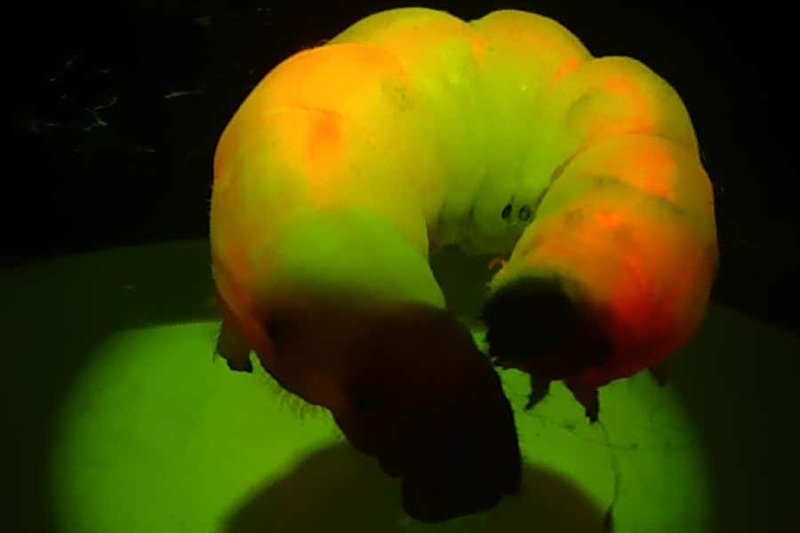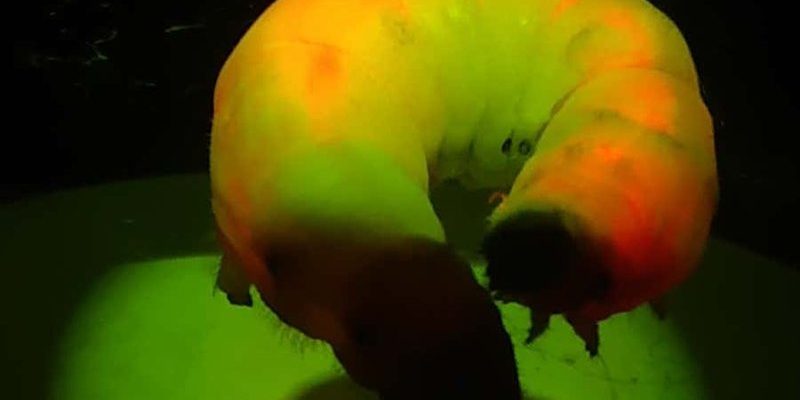
Imagine sitting in a cozy coffee shop, discussing the quirks of tiny creatures. It’s like trying to decipher what goes on in a silkworm’s mind. Just like us, they might have their ways of responding to light and movement, even if their experience is very different from ours. So, let’s dive into the world of silkworms and explore how they interact with **light** and **movement**.
Understanding Silkworms’ Sensory Abilities
Silkworms, specifically the species *Bombyx mori*, are more than just little caterpillars. They have a set of **sensory organs** that help them navigate their environment. Here’s the thing: unlike us, they don’t have complex eyes—what they have are simple **light-sensitive cells**. These cells allow them to detect the presence of light but not in the same way we do.
These light-sensitive cells are typically located on their skin, which means they can sense changes in light intensity. This ability is crucial for them, especially when they’re in their natural habitat. It helps them find the right conditions for feeding and spinning their silk. They can even sense the difference between day and night, guiding their activity patterns.
So, yes, silkworms do recognize **light**! But it’s all about how they experience it—think of it as a dimmer switch rather than a bright light bulb. They can feel when it’s light out, but they can’t see in detail or perceive colors like we can.
The Role of Movement in Silkworm Behavior
Now, let’s talk about **movement**. Silkworms aren’t exactly sprinters, but they do move around! They can sense vibrations through the substrate they sit on. This detection is partly how they interact with their environment and other silkworms.
When a silkworm senses movement, it often responds by either continuing to munch on its food or curling up in a defensive position. Imagine yourself hearing a rustle in the bushes while you’re eating lunch—your instincts kick in, making you aware of your surroundings. Silkworms respond similarly, using movement as a cue to stay alert.
Interestingly, their sensitivity to movement helps them avoid predators in the wild, although they are primarily farmed now. By detecting even the slightest vibrations, they can take action to protect themselves, even in their calmer, domesticated state. This sensory awareness is key to their survival as a species.
Silkworms and Their Light Response
Silkworms primarily respond to light through **phototropism**—the growth or movement of an organism in response to light. In practical terms, this means that when exposed to light, silkworms tend to move towards it, which can be helpful for foraging.
However, they have a much-lauded **nocturnal lifestyle**. Most of their activity happens during the night, which means they have adapted to utilize light cues primarily for survival and feeding. If you were ever to observe silkworms in a controlled environment with varied light, you’d see this behavior in action.
For those interested in observing silkworms at home, a simple setup with a light source can provide a fascinating glimpse into how they react to changes in lighting. Make sure to provide plenty of leaves as they love to munch!
The Impact of Light on Silkworm Behavior
Different **light conditions** can significantly impact silkworm behavior and development. For instance, exposure to prolonged light can lead to stress in silkworms, potentially affecting their growth and silk production. They thrive in conditions that mimic their natural habitats—dark and humid environments during the day.
Interestingly, the **circadian rhythm**—the internal clock that dictates when an organism is awake or asleep—is also influenced by light. Silkworms rely on the light-dark cycle to regulate their feeding habits. This is a bit like us feeling sleepy when the sun goes down; they’re programmed to rest during the night.
Changes in light not only affect their behavior but can also have long-term impacts on their lifecycle. If you’re thinking about rearing silkworms, knowing how to manage their light exposure is crucial for their success.
How Silkworms Detect Movement
Movement is another critical aspect of a silkworm’s sensory toolkit. They primarily depend on vibrations to sense what’s happening around them. This detection method is vital, especially since they’re not particularly mobile creatures.
When they feel movements, it can trigger specific behavioral responses. For instance, if they sense a disturbance, they might stop moving entirely or even retract into their cocoons if they feel threatened. This instinctual behavior shows how attuned they are to their surroundings, even without traditional eyesight.
To better understand this concept, imagine how you might react to sudden movements in your peripheral vision. You’d likely become alert, right? Silkworms do something similar, albeit in their own unique way, using vibration detection as a survival mechanism.
The Importance of Vibrational Sensing
Vibrational sensing in silkworms might seem simple, but it plays a crucial role in their daily lives. This ability helps them find mates when they enter the pupal stage, a critical part of their lifecycle. Mating relies on physical cues, and those vibrations can signal the presence of potential partners. It’s nature’s way of bringing them together!
Additionally, sensing movement helps them navigate their environment, especially when they’re at risk of predation. By being aware of vibrations in their surroundings, they can react quicker. This behavior is akin to how we instinctively react to sudden sounds in our environment.
In a controlled environment, simulating vibrations can promote natural behaviors in silkworms. If you’re experimenting with raising them, consider adding a little **movement stimulus** in their habitat—it could lead to some insightful observations.
Real-Life Applications of Silkworm Sensory Abilities
Understanding how silkworms recognize light and movement goes beyond mere curiosity. It has real-world applications, especially in sericulture—the production of silk. Farmers can optimize conditions for silkworms based on their sensory capabilities to enhance silk yield.
For example, adjusting light exposure and ensuring minimal vibrations can lead to healthier silkworms that produce more silk. This knowledge translates into better farming practices, benefiting both the farmers and the silkworms.
Furthermore, scientists are studying these sensory abilities to improve artificial environments for rearing silkworms, promoting better growth rates and silk quality. The more we learn about these creatures, the more we can enhance silk production methods.
In summary, silkworms might be small, but they have fascinating sensory abilities that help them navigate their world. They can indeed recognize **light** and **movement**, which guide their behavior and lifestyle. Their simple light-sensitive cells and vibrational sensing systems allow them to interact with their environment effectively, ensuring their survival and reproduction.
Whether you’re a budding entomologist or simply curious about these silk-producing wonders, understanding their sensory world helps us appreciate the complexities of nature. So next time you see a silkworm, remember: there’s more to these creatures than meets the eye!

